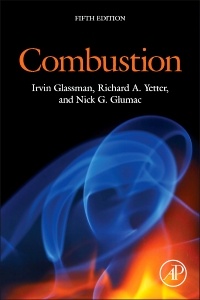Combustion (5th Ed.)
Auteurs : Glassman Irvin, Yetter Richard A., Glumac Nick G.

Throughout its previous four editions, Combustion has made a very complex subject both enjoyable and understandable to its student readers and a pleasure for instructors to teach. With its clearly articulated physical and chemical processes of flame combustion and smooth, logical transitions to engineering applications, this new edition continues that tradition. Greatly expanded end-of-chapter problem sets and new areas of combustion engineering applications make it even easier for students to grasp the significance of combustion to a wide range of engineering practice, from transportation to energy generation to environmental impacts.
Combustion engineering is the study of rapid energy and mass transfer usually through the common physical phenomena of flame oxidation. It covers the physics and chemistry of this process and the engineering applications?including power generation in internal combustion automobile engines and gas turbine engines. Renewed concerns about energy efficiency and fuel costs, along with continued concerns over toxic and particulate emissions, make this a crucial area of engineering.
2. Chemical Kinetics
3. Explosive and General Oxidative Characteristics of Fuels
4. Flame Phenomena in Premixed Combustible Gases
5. Detonation
6. Diffusion Flames
7. Ignition
8. Environmental Combustion Considerations
9. Combustion of Nonvolatile Fuels
10. New Concepts and Technologies
- New chapter on new combustion concepts and technologies, including discussion on nanotechnology as related to combustion, as well as microgravity combustion, microcombustion, and catalytic combustion—all interrelated and discussed by considering scaling issues (e.g., length and time scales)
- New information on sensitivity analysis of reaction mechanisms and generation and application of reduced mechanisms
- Expanded coverage of turbulent reactive flows to better illustrate real-world applications
- Important new sections on stabilization of diffusion flames—for the first time, the concept of triple flames will be introduced and discussed in the context of diffusion flame stabilization
Date de parution : 11-2014
Ouvrage de 774 p.
19x23.3 cm
Thème de Combustion :
Mots-clés :
Arrhenius rate constant; Blowoff; C-J point; Carbon and coal combustion; Carbon monoxide oxidation; Catalytic ignition; Cellular front; Chain ignition; Chemical reactions; Chemical thermodynamics; Combustion synthesis; Cool flames; Detonation limits; Detonation phenomena; Detonation velocity; Droplet combustion; Equilibrium constants; Explosion limits; Flame stabilization; Flame structure; Flame temperatures; Flammability limits; Flashback; Free energy; Heats of reaction; High-temperature hydrocarbon oxidation; Hugoniot curve; Hydrogen oxidation; Hypergolicity; Jet diffusion flame; Laminar flame speed; Laminar premixed flame; Low-temperature hydrocarbon oxidation; Metal combustion; Minimum ignition energy; Negative temperature coefficient; Nonpremixed combustion; Oxides of nitrogen; Partial equilibrium and steady-state assumptions; Photochemical smog; Pressure-dependent reactions; Pyrophoricity; Quenching distance; Rate-of-production analysis; Reaction rates; Sensitivity analysis; Soot; Soot oxidation; Spark ignition; Stirred reactor; Stratospheric ozone; Sulfur oxides; Thermal ignition; Transition state theory; Turbulent flames; ZND structure
